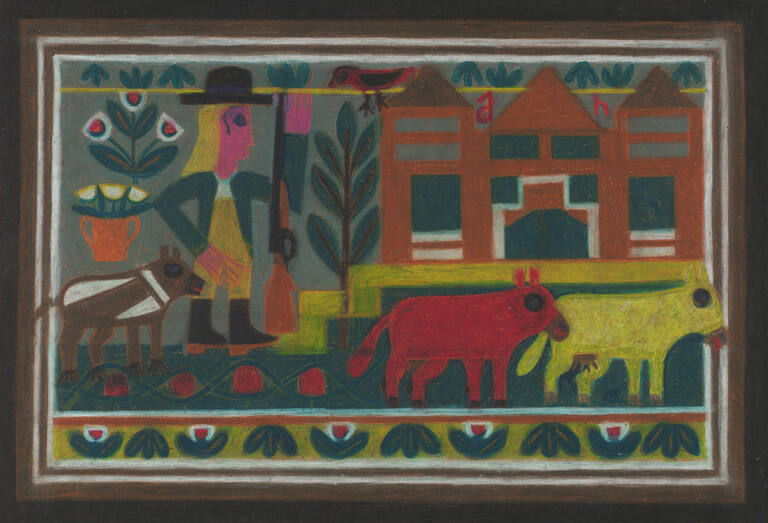
Object Details
Artist
Pablo Picasso
Date
1915
Medium
Gouache and watercolor on paper
Dimensions
19 1/2 × 16 1/2 inches (49.5 × 41.9 cm)
Credit Line
Gift of Bernard Livingston, Class of 1939, and Constance Livingston
Object
Number
2000.163.002
Picasso once noted that “work is a way of keeping a diary” and his images document a long and compli(…)
Picasso once noted that “work is a way of keeping a diary” and his images document a long and complicated life. Throughout his painting, sculpture, prints, and works on paper, he reveals the depths of his turbulent relationships against the backdrop of two world wars, the Spanish Civil War, the rise of communism, and the immense social and technological changes of the past century. This gouache represents one of the earlier moments in his long career. Painted in 1915, it is a painfully personal image of mourning that reflects the larger crisis of a world in the midst of a devastating war. In 1911 Picasso met Éva Grouel and the consequences of this new relationship appeared in the startling breakthroughs found in his art during the next four years—a return to color and the movement from synthetic to analytical cubism. Éva was frail and delicate, yet she filled both a physical and intellectual need in Picasso. She also brought a calm domesticity to his life, and he became interested in portraying some of the everyday minutiae of home. She remained his muse until her death of tuberculosis in December 1915. In both its small size and moving subject, Picasso has created an intimate and very personal response to the imminent loss of his beloved mistress, with the grieving seated figure most likely a self-portrait. This grimacing, macabre, one-eyed figure is the harlequin from his earlier work, now the grim reaper, patiently awaiting the inevitable. Éva’s death left Picasso with a lifelong fear of illness and an emotional void that would not be filled again for many years. (“FIGURE/STUDY: Drawings from the Herbert F. Johnson Museum of Art,” text by Nancy E. Green and presented at Carlton Hobbs, LLC January 25-February 2, 2019)












